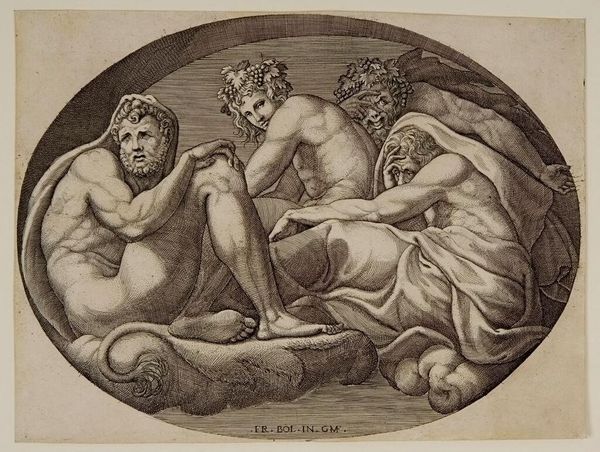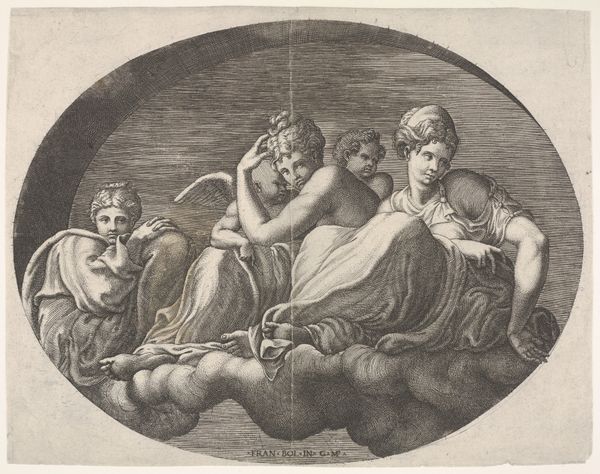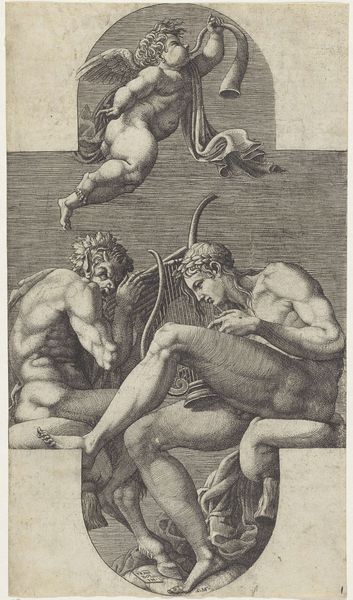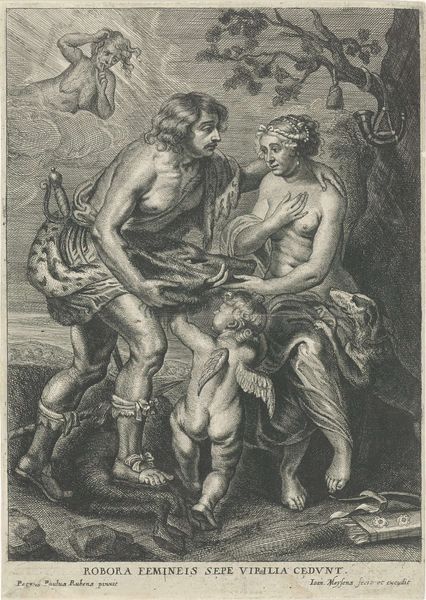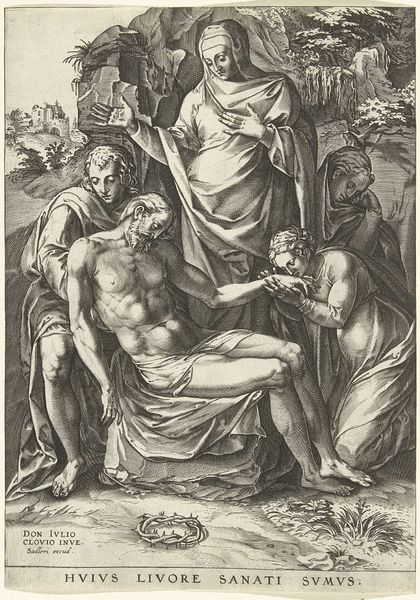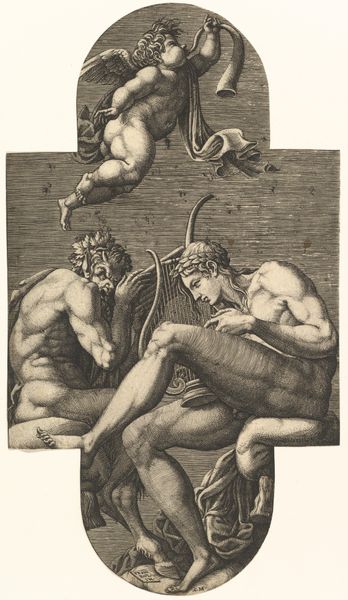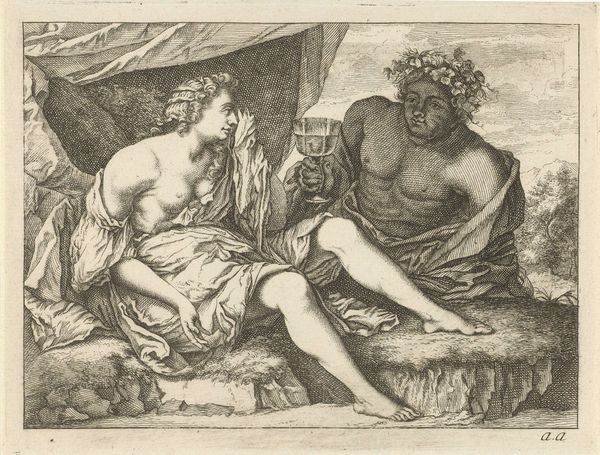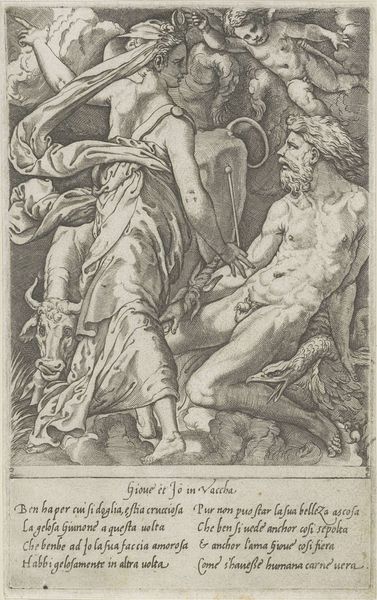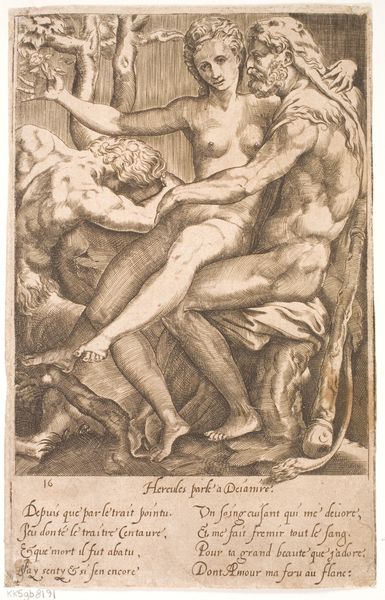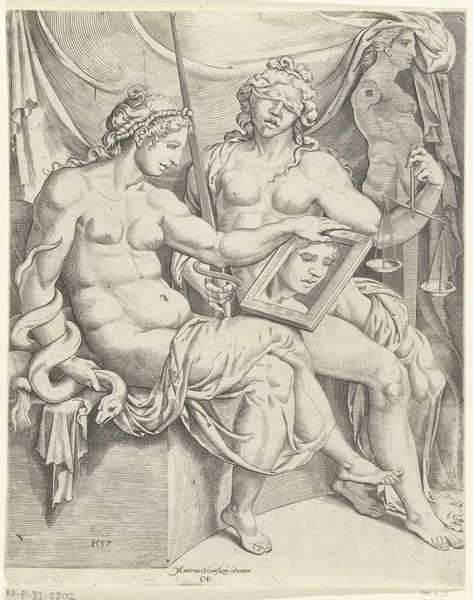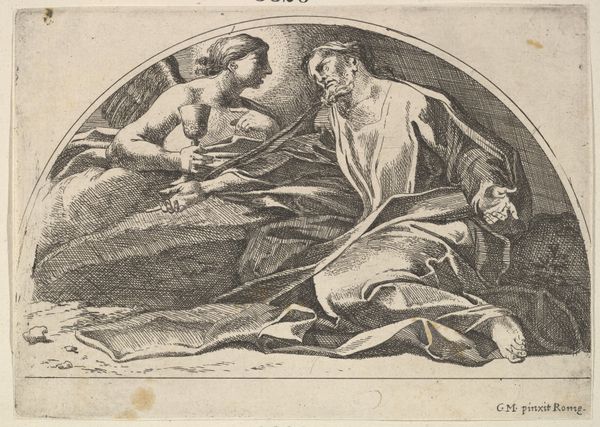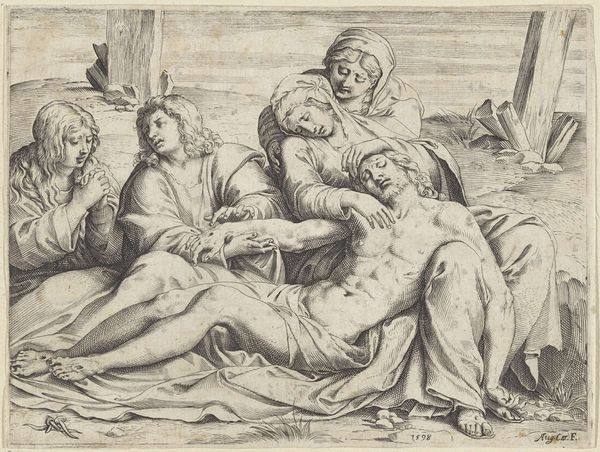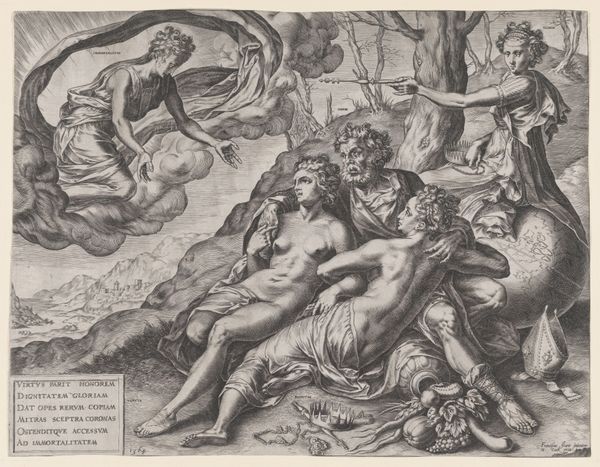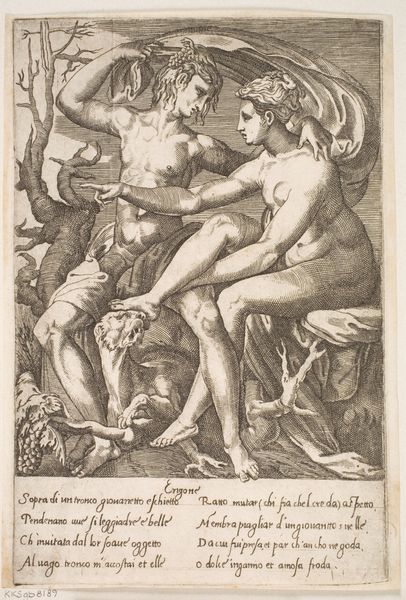
Hercules, Bacchus, Pan, and another god seated on a cloud under an arch, an oval composition, from a series of eight compositions after Francesco Primaticcio's designs for the ceiling of the Ulysses Gallery (destroyed 1738-39) at Fontainebleau 1560s
0:00
0:00
drawing, print, engraving
#
drawing
# print
#
charcoal drawing
#
mannerism
#
figuration
#
history-painting
#
nude
#
engraving
#
male-nude
Dimensions: sheet: 7 1/16 x 9 7/16 in. (18 x 24 cm)
Copyright: Public Domain
Curator: Ah, another gem from the Met. This engraving, created in the 1560s by Giorgio Ghisi, showcases Hercules, Bacchus, Pan, and another god lounging rather decadently on a cloud. It's based on a design for the Ulysses Gallery at Fontainebleau by Francesco Primaticcio. What's your first take? Editor: It feels...claustrophobic. Like a heavenly hot tub that's been overbooked. The composition is so compressed into that oval; I'm getting anxieties just looking at them all crammed together, half-naked, on what seems to be a sentient puffball. Curator: Indeed, the oval format immediately forces a specific reading. The figures are deliberately arranged to fill almost all available space, creating a sense of teeming life characteristic of Mannerist art. Note the meticulous use of line to define musculature and drapery; it creates an almost sculptural effect, even in print. Editor: Mmm, the line work *is* exquisite. I love how even in the monochrome palette, you can feel the texture. Hercules' skin looks like hammered metal. Is it just me, or is Pan giving some serious side-eye? What’s his beef? Curator: (Chuckles) Pan’s expression contributes to the overall air of cultivated ambiguity. The viewer is invited to speculate about the relationships, about their stories. Ghisi's skill lay in translating the dynamism of Primaticcio’s painted designs into the more rigid medium of engraving, capturing that essential spirit of Mannerist sophistication. Editor: Sophistication? Maybe. But there's a real undercurrent of...something else. Is it debauchery? Contemplation of mortality? Hard to say. That dark arch behind them gives a slightly ominous vibe to all the mythological glee. It reminds me of how quickly pleasure can turn hollow. Curator: Perhaps the ambiguity *is* the point. These deities embody strength, revelry, the pastoral life—all elevated yet confined by the visual structure. It underscores the Mannerist fascination with artifice and the deliberate display of skill over straightforward representation. The composition reflects philosophical concerns, exploring tension, humanism and art's possibilities in its relation to truth. Editor: I think I like it precisely because it is so extra. A beautiful mess. So much drama packed into such a tiny space; these gods may have been enjoying divine decadence, but they were clearly heading toward something... Curator: ...Toward complexity, perhaps? Giorgio Ghisi, via Primaticcio, gifts us a concise reminder that beauty lies not only in flawless representation but also in challenging conventional visual expression. Editor: Well said. Now, if you'll excuse me, I suddenly have the urge to re-evaluate all my life choices, in a baroque kind of way... preferably in an over-crowded hot tub.
Comments
No comments
Be the first to comment and join the conversation on the ultimate creative platform.
